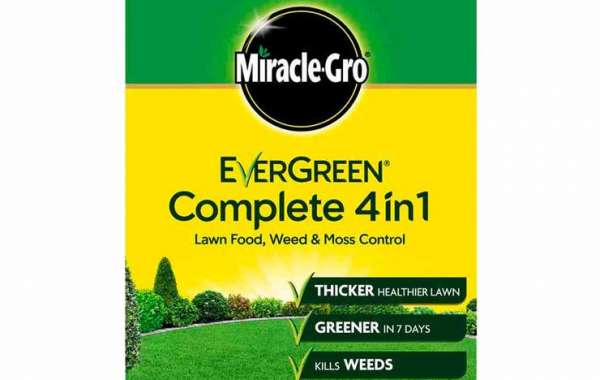When it comes to cultivating a vibrant and healthy lawn, the foundation lies beneath your feet. Lawn soil plays a crucial role in determining the health and appearance of your grass. Whether you're starting a new lawn or maintaining an existing one, understanding the properties and requirements of lawn soil is essential. Fitfit Garden, a leading expert in lawn care, emphasizes the importance of choosing and maintaining the right lawn soil to ensure your lawn flourishes.
Understanding the Basics of Lawn Soil
Lawn soil is more than just dirt; it's a complex medium that provides nutrients, water, and support to your grass. The ideal lawn soil is a balanced mixture of sand, silt, and clay, often referred to as loam. This combination ensures good drainage, adequate water retention, and sufficient nutrient availability. Sandy soils drain too quickly and don't retain nutrients well, while clay soils retain water but may lead to poor drainage and root problems. Silt, being fine particles, helps to hold nutrients and moisture but can compact easily. Loamy soil strikes the perfect balance, promoting healthy root growth and a lush green lawn.
Testing and Improving Your Lawn Soil
Before embarking on any lawn care routine, it's essential to test your soil. Soil testing provides valuable information about its pH level, nutrient content, and texture. You can purchase a soil testing kit from a garden center or send a sample to a laboratory for detailed analysis. The results will guide you in making necessary amendments. For instance, if the pH is too high (alkaline) or too low (acidic), you can adjust it with lime or sulfur respectively. Additionally, incorporating organic matter such as compost can significantly improve soil structure, enhance nutrient content, and increase microbial activity, all of which contribute to healthier lawn soil.
The Role of Aeration in Lawn Soil Health
Aeration is a critical practice for maintaining lawn soil health, especially in compacted soils. Over time, soil can become compacted due to foot traffic, lawn equipment, and natural settling. Compacted soil restricts air flow, water infiltration, and root growth. Aeration involves perforating the soil with small holes to allow air, water, and nutrients to penetrate the grass roots. This process helps alleviate compaction, promotes deeper root growth, and improves your lawn's overall health and resilience. Aeration is typically done using a core aerator, which removes small plugs of soil and leaves them on the lawn surface to break down naturally.
Fertilizing Lawn Soil for Optimal Growth
Fertilization is essential for supplying your lawn with the nutrients it needs to thrive. Lawn soil requires a balanced supply of nitrogen, phosphorus, and potassium (NPK), along with other trace minerals. Nitrogen promotes vigorous leaf growth, phosphorus supports root development, and potassium enhances overall plant health and disease resistance. The type and frequency of fertilizer application depend on the grass species, soil type, and climate. Slow-release fertilizers are often recommended as they provide a steady supply of nutrients over time, reducing the risk of nutrient runoff and promoting sustainable lawn care practices.
Watering Practices to Maintain Healthy Lawn Soil
Proper watering practices are vital for maintaining healthy lawn soil. Overwatering can lead to waterlogged soil, root rot, and nutrient leaching, while underwatering stresses the grass and makes it susceptible to disease and drought. The key is to water deeply and infrequently, encouraging roots to grow deeper into the soil. This promotes a more drought-tolerant lawn. Early morning watering is ideal as it reduces evaporation and allows grass blades to dry before evening, minimizing the risk of fungal diseases. Using a rain gauge or soil moisture sensor can help determine when and how much to water, ensuring your lawn soil remains optimally moist.
Common Lawn Soil Problems and Solutions
Even with the best care, lawn soil can face various challenges. Common problems include soil compaction, poor drainage, nutrient deficiencies, and pest infestations. Addressing these issues promptly is crucial to maintaining a healthy lawn. Compacted soil can be remedied through regular aeration. Poor drainage may require amending the soil with organic matter or installing drainage systems. Nutrient deficiencies can be corrected with appropriate fertilizers and soil amendments. Pest problems, such as grubs or fungal diseases, often indicate underlying soil issues that need attention. Regular monitoring, soil testing, and adapting your lawn care practices to changing conditions are key to overcoming these challenges and ensuring your lawn remains lush and green.
The health of your lawn is directly tied to the condition of your lawn soil. By understanding its properties, regularly testing and amending it, and following proper lawn care practices, you can create an optimal growing environment for your grass. A well-maintained lawn soil not only supports a beautiful yard but also contributes to the overall ecosystem by enhancing water infiltration, reducing runoff, and providing habitat for beneficial organisms. Investing time and effort into caring for your lawn soil will pay off with a thriving, resilient lawn that you can enjoy for years to come.




